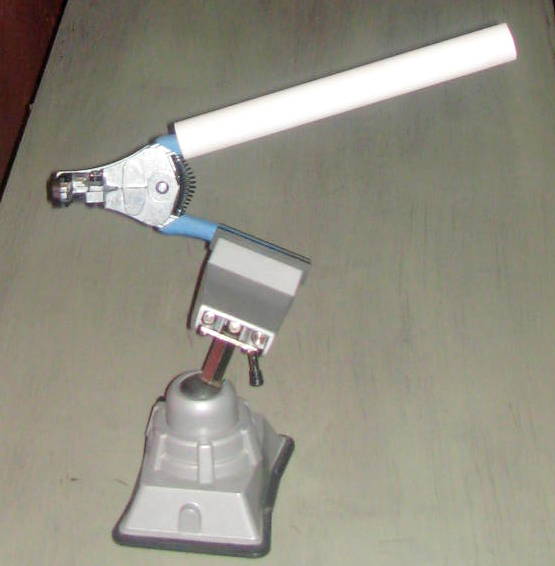 |
| Lever added to wire stripper (see lever devices below) |
Principles affected
Background
Levers are as old as the earliest humans. Yet, they still can play a role today in making work easier, often at low cost.
Levers are tools in and of themselves. Furthermore, they can enhance the functionality of other tools. Either way, there are countless applications. Note that power tools can also be used in many of these applications, but levers are typically smaller and cheaper. Therein lies the value.
Objectives
Reduce force.
Ideas and Options
Simple levers
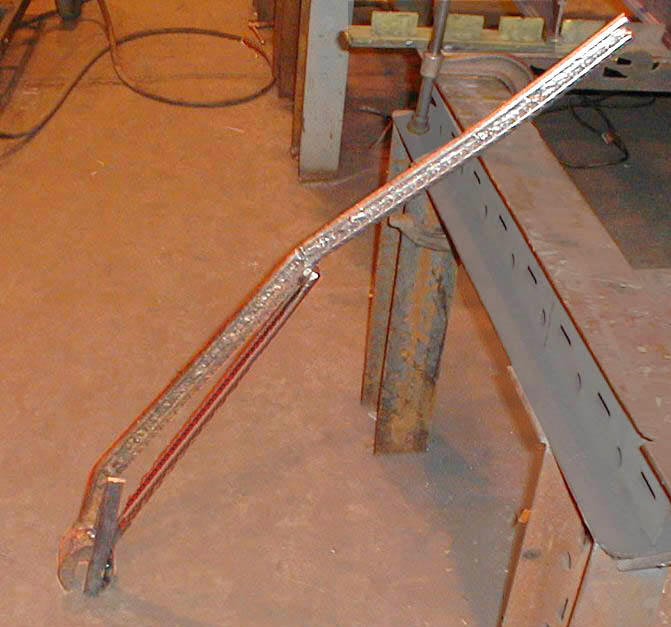 |
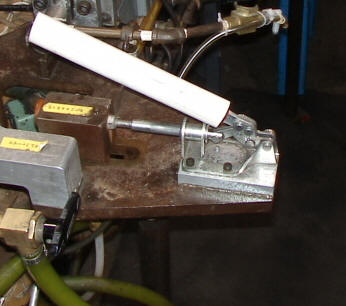 |
| Pry bar | PVC pipe as lever |
Levers are in use today that are hardly different from those used thousands of years ago. The example above left shows a home made pry bar in a weld shop. Above right, a short length of PVC pipe adds leverage for closing a clamp fixture.
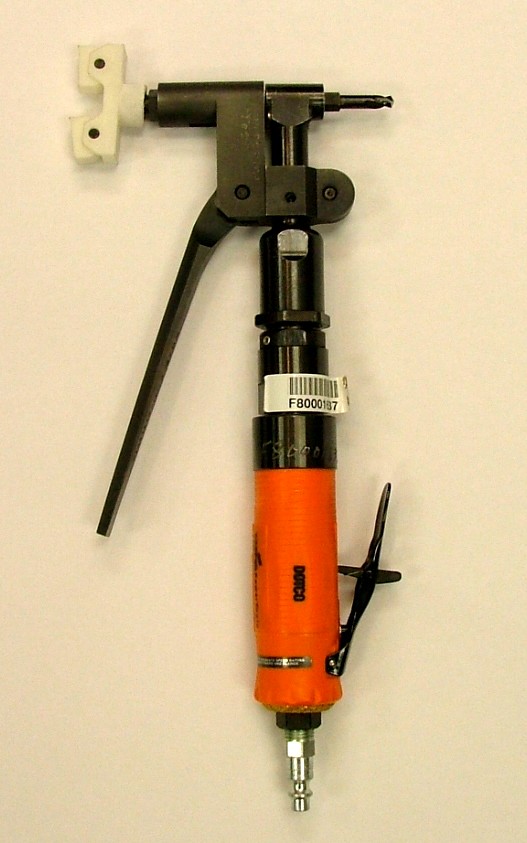 |
| Lever attachment on drill |
An example of a creative new use for a lever is the attachment to a right-angle drill, shown above. This lever attachment is used in constricted areas where it is not possible push against the drill as normal using body weight. The butt of the attachment is placed against some adjacent support. Squeezing the lever extends it, pushing the drill bit down.
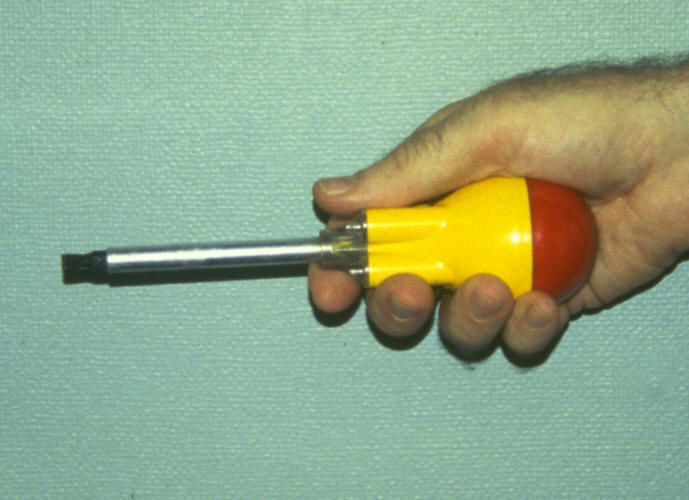 |
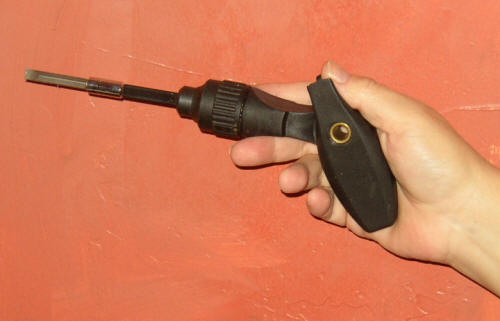 |
| Ball handled screwdriver | Screwdriver with hinged lever handle |
Levers can be incorporated into many types of tools in effective, if unconventional, ways. Some, like the ball-handled screwdriver, do not particularly look like levers, but nonetheless provide leverage. A hinged handle in a screwdriver is a clever way to enable generating more force to turn difficult screws.
Lever devices
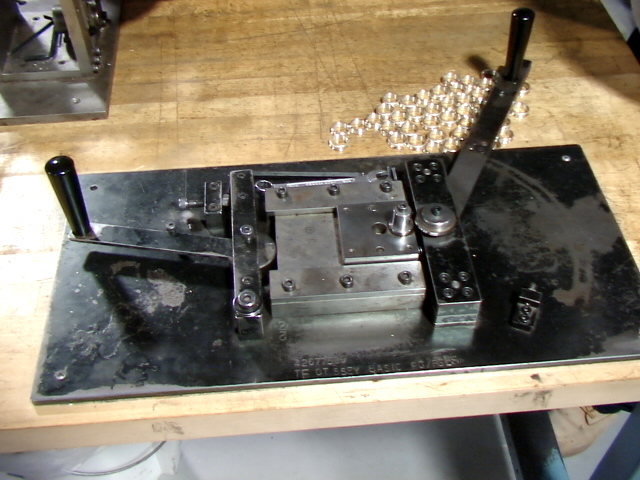 |
| One-of-a-kind lever device |
Levers can easily be incorporated to create labor-saving devices. Often, these are fabricated in house by maintenance staff for unique needs.
 |
| Wire stripper lever device |
The example above is an effective, makeshift device to eliminate the need to repetitively squeeze a hand wire stripper. The components are readily available in hardware stores. A short length of PVC pipe placed over one handle provides the lever. A small vise secures the other handle. Note that the vise has (a) a vacuum cup base that enables use at any workbench and (b) a ball joint that enables orienting the wirestripper for easy access. See also Mounted tools and Benchtop fixtures.
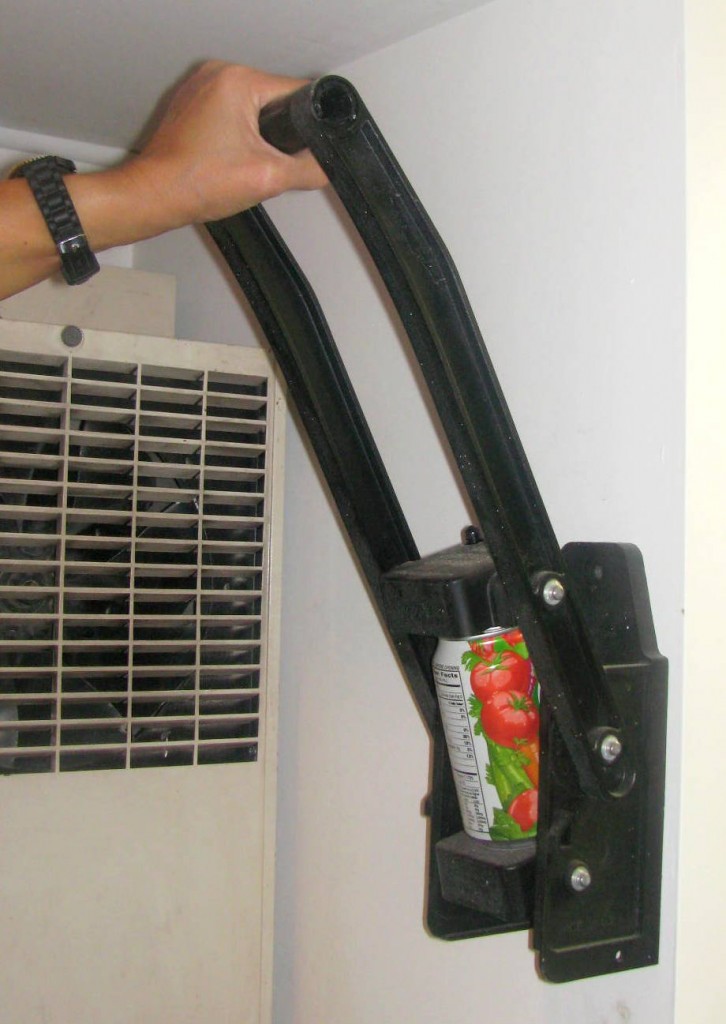 |
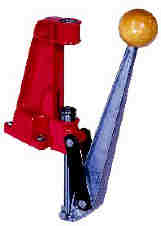 |
| Can crusher | Shotgun shell loader |
Other off-the-shelf lever devices that can be adapted to production work include a standard can crusher (above left) or a shotgun shell loader (above right). Either of these can be mounted vertically or horizontally on a workbench.
Compound levers
 |
 |
| Simple lever: one fulcrum, one lever | Compound lever: two fulcrums, two levers |
A particularly underused type of lever is the compound lever, an age-old technique that multiplies the force of simple levers. A tool with a simple lever has only one fulcrum. A compound lever tool has two fulcrums, arranged so that one lever acts upon the other, thus multiplying the force that can be generated, with less movement of the grips.
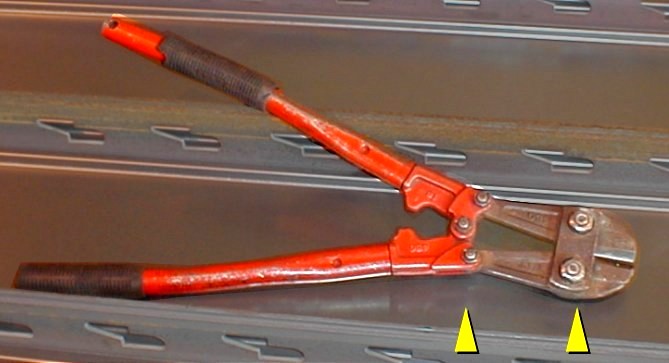 |
| Bolt cutter |
Probably the most common example of a compound lever tool in use today is the bolt cutter. If it had only a single lever, it would require handles three or four times as long to generate the same force.
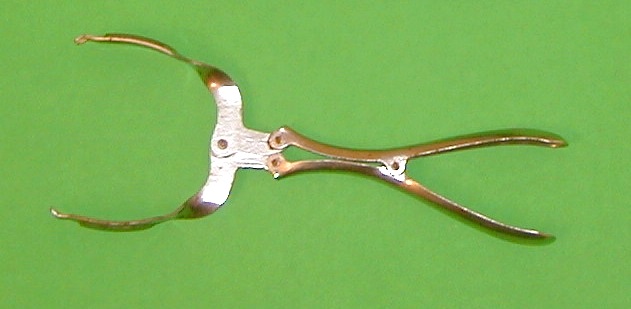 |
| Bottle grabber (for canning) |
Depending on the configuration of the lever arms and fulcrums, a tool can be designed to maximize force or minimize grip movement, or some combination in between. The photo above shows a tool designed for canning vegetables at home. Only a small movement of the handles is needed to generate enough force to lift a full jar out of boiling water.
The point is that small hand tools can be designed to fit in constrained areas, requiring very little movement, yet creating more force than a standard pliers or other squeezing tool. Of course, power tools provide an alternative way to reduce force. But they are sometimes too bulky to fit where a compound lever too can more easily.
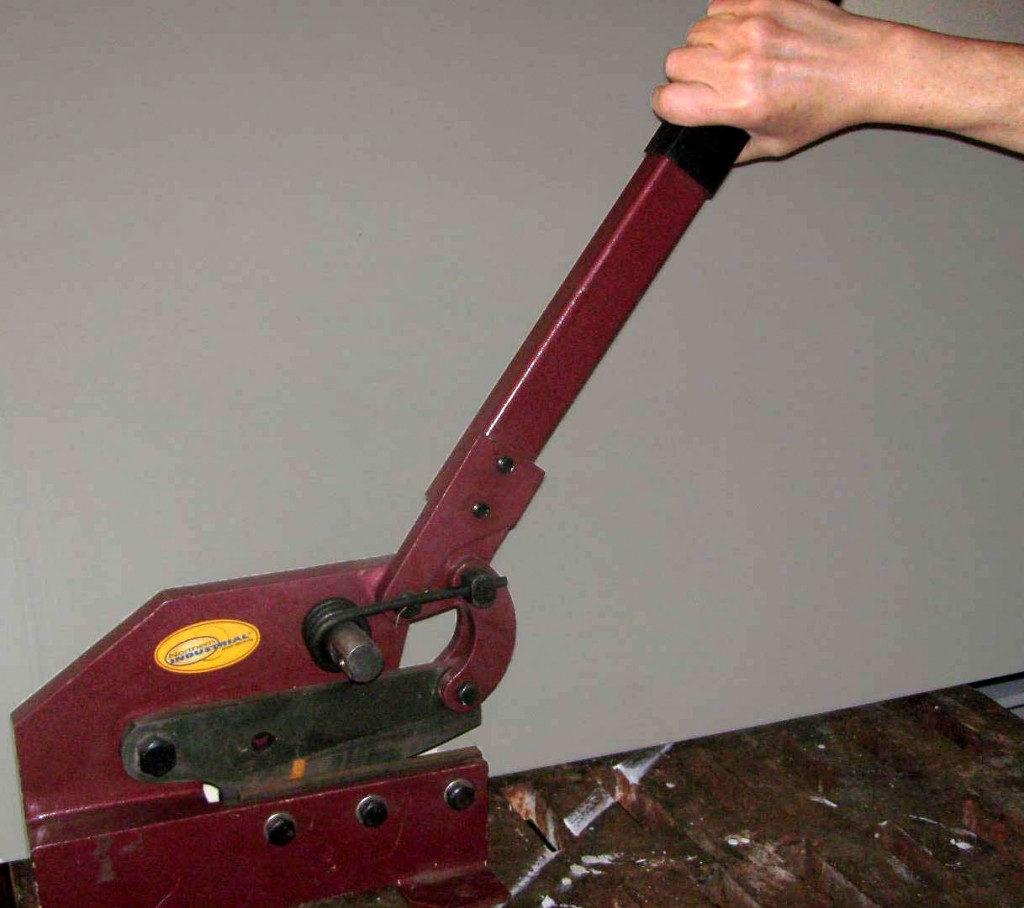 |
 |
| Bench sheet metal cutter with compound lever | Close up showing the two fulcrums |
Compound lever tools can be mounted on a workbench to enable generating even more force. The most common example is a sheet metal cutter, as shown above.
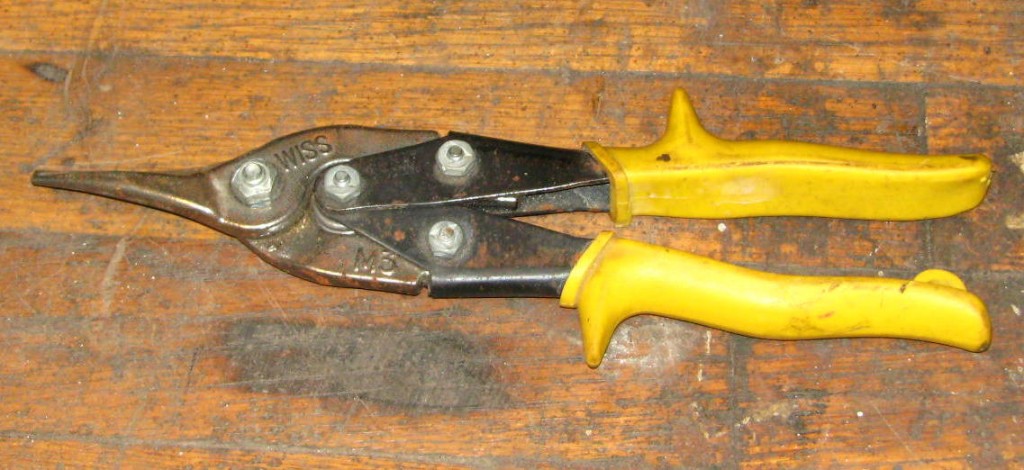 |
| Compound lever sheet metal cutters |
As a final comment, compound levers were widely used in the 19th Century, before power tools were available. However, because of the substantial benefits at a low cost, more compound designs have become commercially available in recent years, such as the sheet metal cutters shown above.
Mechanical disadvantage
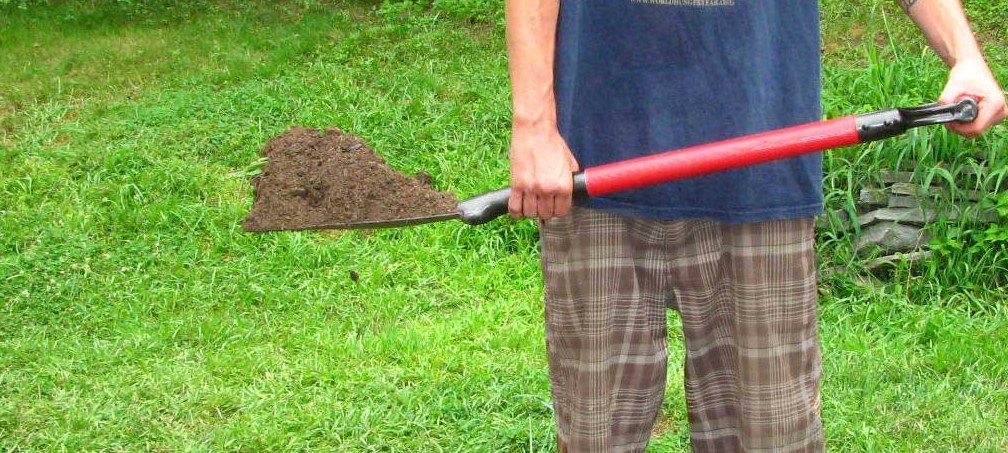 |
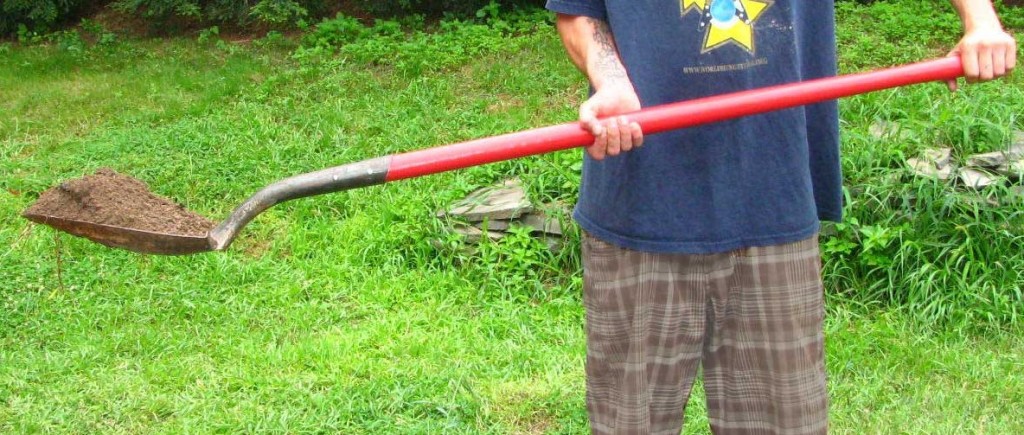 |
| The longer handle triples the load | |
Sometimes levers work to disadvantage too. A familiar example is the shorted-handled vs. long handled shovel. A long-handled shovel makes it easier to dig without bending your back and is generally better for that reason. However, a shortcoming is that the longer handle creates an unintended lever that creates a mechanical disadvantage.
In the photos shown above, the person’s right hand is the fulcrum. The short-handle puts the load of dirt close to the fulcrum, thus easier to handled. In contrast, the longer shovel puts the dirt farther from the fulcrum, increasing the strain on the body.
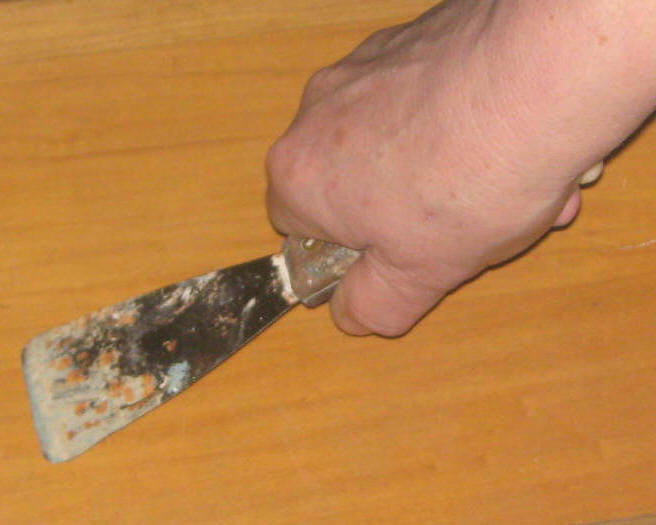 |
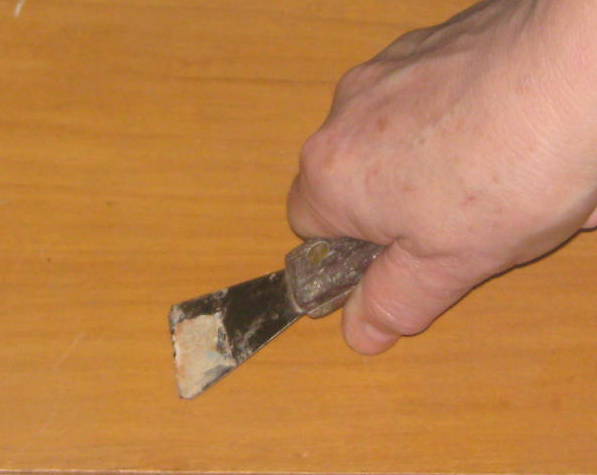 |
 |
| Longer scraper: harder | Stubby scraper: easier | Commercially available stubby scraper |
Another example is a paint scraper, where a long tool is in effect a lever, inadvertently increasing the exertion required to do the work. Shortening the length (or choking up on the handle) reduces the effort needed to generate force on the working end. Some stubby tools are available on the market for this reason.
Note in the left and center photos above, the front knuckle is the fulcrum. Cutting the scraper puts the load (the paint to be removed) closer to the fulcrum.
The point is to be alert for mechanical disadvantage in tools and equipment. In these situations, the “lever” is usually unintended and may not look like a classic lever at all, even though it has that effect.
Classes of levers
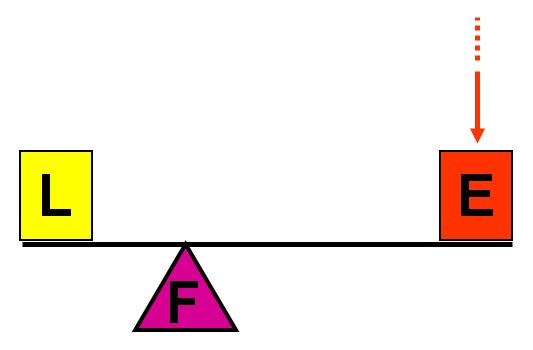 |
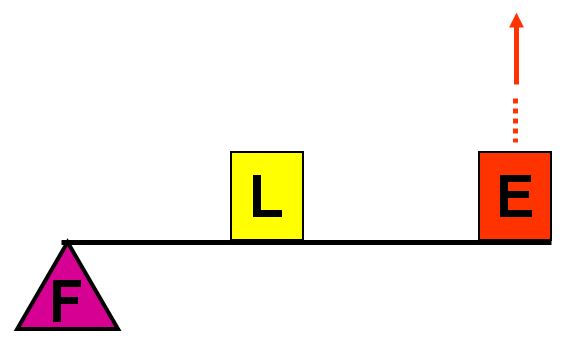 |
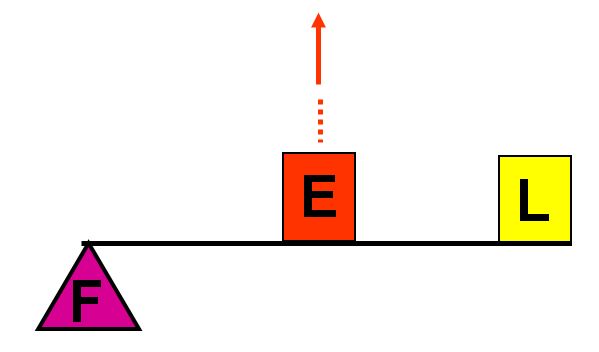 |
| Class 1 (pry bar) | Class 2 (wheelbarrow) | Class 3 (catapult) |
It helps to have a basic understanding of how levers work, including the three classes of levers. Classes 1 and 2 provide the most force. Class 3 is the weakest, but yields the fastest movement.
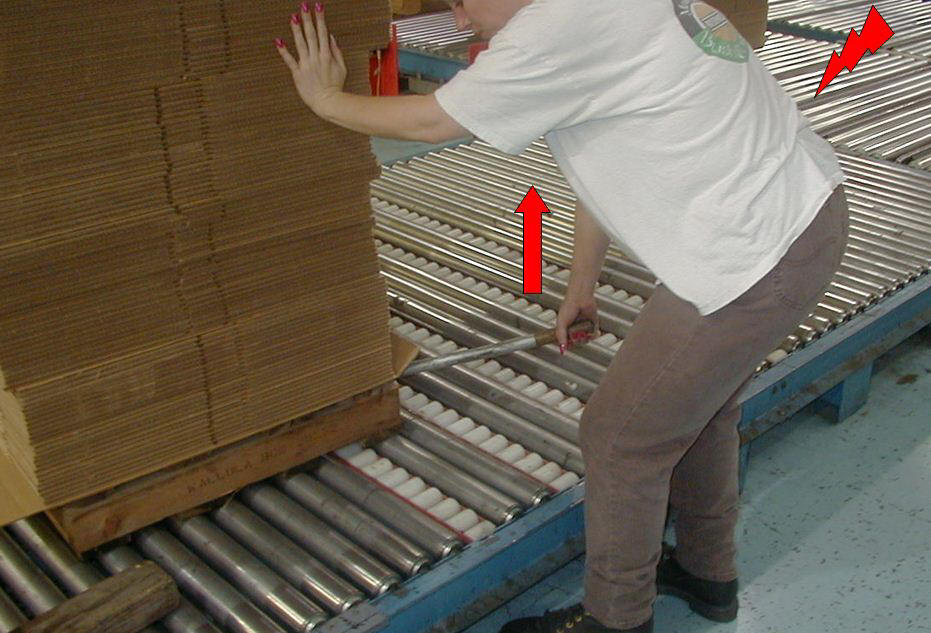 |
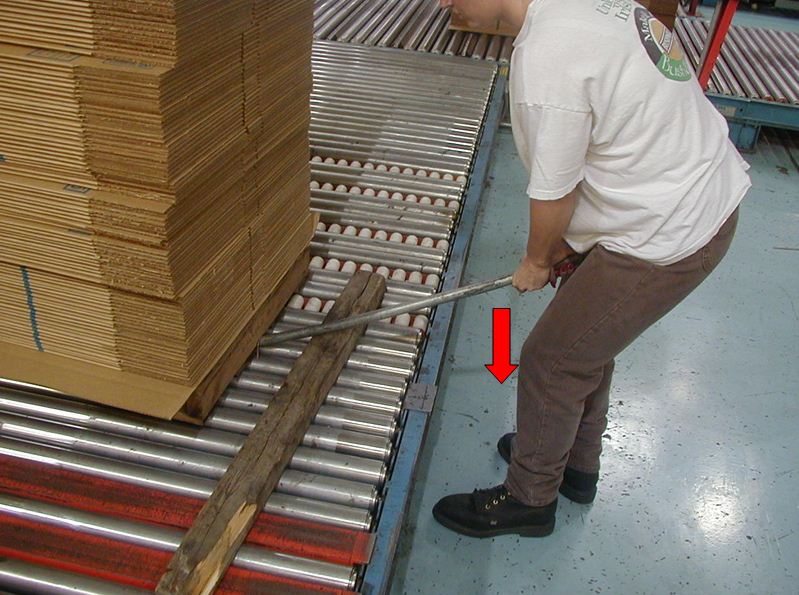 |
| Before: Difficult | After: Much easier |
A case in point was the employee above, who was observed stuggling to reposition a loaded pallet on a conveyor by pulling up on a small pole (kept nearby for this purpose). A quick change in method made the task easier, by using another nearby board as a fulcrum, then pushing down and taking advantage of body weight.
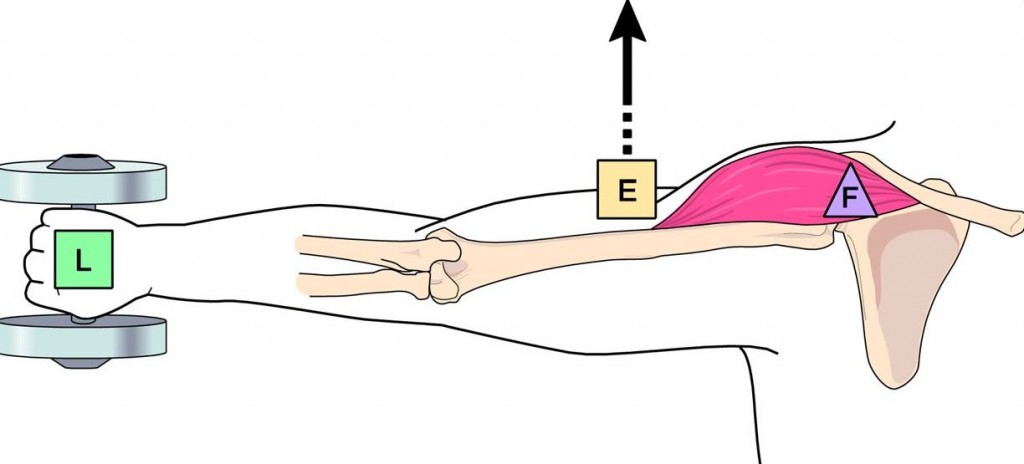 |
| Human body: Class 3 levers |
It is worth noting that the human body consists essentially of a system of Class 3 levers, i.e., fast moving, but weak. It is for this reason that we seek better tools for strenuous jobs. SeeBiomechanics.
